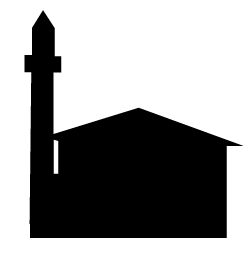Uchkhiti
Uchkhiti Mosque
After an earlier mosque was destroyed during the course of the 1877-1878 Russo-Ottoman War (the conflict that eventually brought Adjara into the Russian Empire), local craftsman Usta Kikava Basiladze built the present Uchkhiti village mosque. This simple wooden mosque represents a transitional period between the elaborate incised carvings of the Ottoman era and the colorful murals and applied ornament of the later Russian imperial era. The prayer hall features few carvings and no paintings, but the woodwork is lacquered and well-maintained. Two simple ceiling medallions with a star and crescent motif frame the small, unpainted dome. Some elements of the prayer hall appear to be new, including the mihrab, mezzanine railings, and minbar, which features rather crude approximations of common applied motifs. Horizontal wooden bars on the front windows are an interesting remnant from an earlier era (see, for example, the wooden window lattices at Kvirike mosque).
DISTRICT : Khelvachauri
LOCATION : 41°32’13.9”N 41°48’27.3”E
POPULATION : 260
CONSTRUCTION DATE : 1880s
RENOVATION DATE(S) : 1990s; 2016
CRAFTSMEN : Usta Kikava Basiladze (local) with Laz masters
MINARET : No


